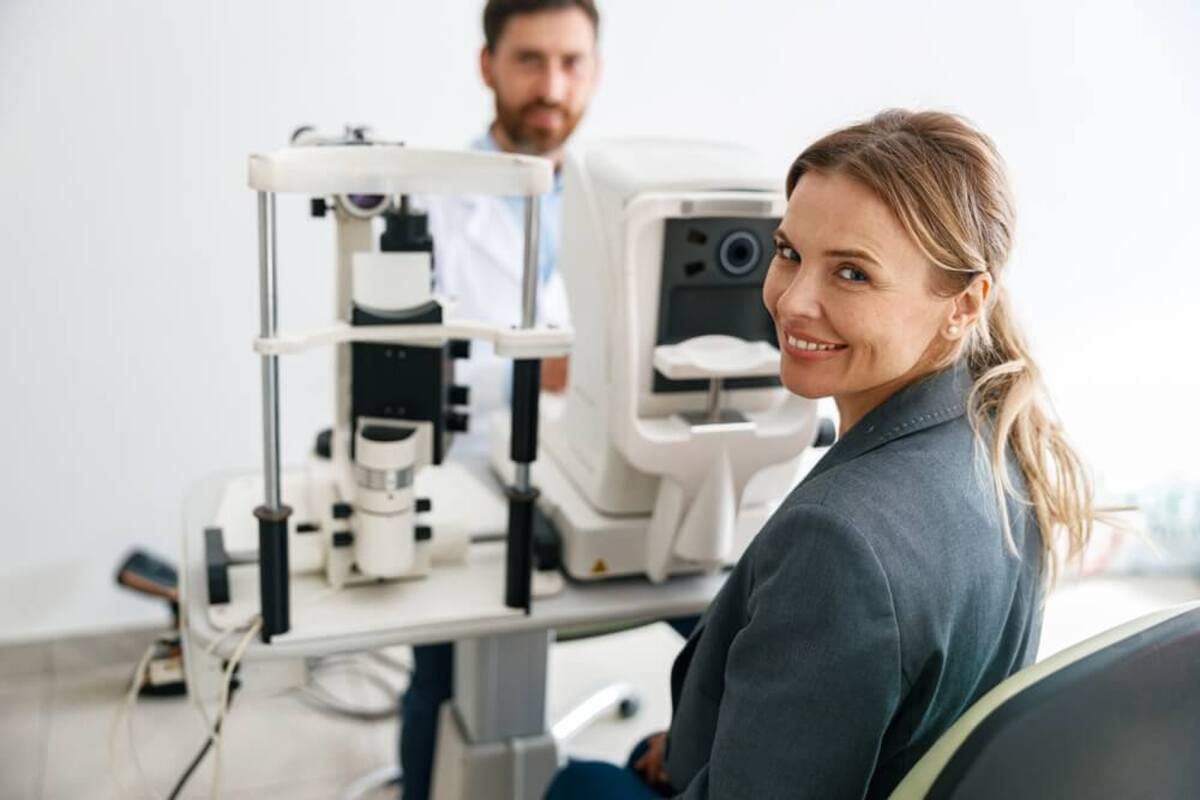An eye stye, a hordeolum, is a painful, red bump that forms on the eyelid, typically near the edge. While these bumps are often harmless, they can be uncomfortable and cause noticeable swelling or irritation. The good news is that most styes can be treated effectively with home remedies and, in some cases, medical treatment. In this blog, we’ll explore how to treat an eye stye, common causes, symptoms, and how to prevent them from recurring. Whether you’re dealing with an external or internal stye, we’ve covered you with helpful tips for treatment and prevention.
Understanding Eye Styes
An eye stye is a small infection that develops on the eyelid, often due to a clogged oil gland. These glands, called meibomian glands, secrete oils that help lubricate the eye. When one of these glands becomes blocked, bacteria can get trapped inside, causing an infection that results in a painful bump.
Causes of a Stye
Several factors can contribute to the development of a stye, including:
- Bacterial Infection: The most common cause of a stye is bacteria, particularly Staphylococcus aureus. These bacteria can infect the eyelash follicle or the eyelid’s oil glands, forming a stye.
- Poor Hygiene: Not washing your hands frequently or touching your eyes with dirty hands can introduce bacteria to the area, increasing the risk of an infection.
- Eye Makeup: Using old or expired eye makeup can introduce bacteria into the eye, especially if you wear eye makeup near the edge of your eyelid.
- Contact Lenses: Wearing contact lenses for extended periods, not cleaning them properly, or touching them with unwashed hands can increase the risk of eye infections, including styes.
- Skin Conditions: Conditions such as rosacea or seborrheic dermatitis may contribute to stye formation, as they affect the eyelid’s oil glands.
Symptoms of a Stye
Styes are usually easy to identify because they cause distinct symptoms. The most common symptoms include:
- A painful red bump on the eyelid may feel tender or sore to the touch.
- Swelling of the entire eyelid or a portion of it.
- A painful lump near the edge of the eyelid, which an infected eyelash follicle can cause.
- Tearing or watery eyes, often due to irritation caused by the stye.
- Light sensitivity, as the affected eye may become more sensitive to bright lights.
- Crustiness around the affected eyelid.
- In severe cases, the pus from the infected area may drain, helping to alleviate some of the pressure.
If you experience any of these symptoms, it is important to start treatment early to prevent the infection from worsening.
How to Treat an Eye Stye at Home
Most styes can be treated at home using simple and natural remedies. Here are some of the most effective treatment options:
1. Warm Compresses
One of the most effective and widely recommended treatments for styes is the application of warm compresses. The heat softens the hardened oils blocking the glands, allowing the stye to drain naturally. Applying warmth to the affected eyelid also helps reduce swelling and pain.
How to use warm compresses:
- Soak a washcloth in warm water and wring it out.
- Place the warm washcloth over the affected eyelid for 10-15 minutes.
- Repeat this process 3-4 times daily to help alleviate pain and encourage the stye to drain.
The heat from the compress helps improve blood circulation and speed up the healing process.
2. Cleaning the Eyelid
 Keeping the affected area clean is crucial for treating a stye. Cleaning the eyelid and surrounding skin can help remove bacteria and prevent infection.
Keeping the affected area clean is crucial for treating a stye. Cleaning the eyelid and surrounding skin can help remove bacteria and prevent infection.
How to clean the eyelid:
- Use mild soap or baby shampoo mixed with warm water.
- Dip a cotton swab or cotton ball into the soapy water and gently clean the affected area.
- Avoid scrubbing or applying pressure to the stye, which can worsen the infection.
Regular cleaning helps maintain good hygiene and prevents the stye from spreading.
3. Applying Antibiotic Ointment
Sometimes, your doctor may recommend an over-the-counter ointment to help fight the bacterial infection causing the stye. These ointments can be applied directly to the affected eyelid to reduce infection and promote healing.
How to use antibiotic ointment:
- Clean the eyelid as described above.
- Apply a thin layer of antibiotic ointment (such as Neosporin) to the stye.
- Follow the instructions on the package for dosage and frequency.
Sometimes, your doctor may prescribe antibiotic eye drops if the infection is more severe.
4. Avoid Eye Makeup and Contact Lenses
If you wear eye makeup, avoiding using it while you have a stye is important. Eye makeup can further irritate the affected area and introduce more bacteria to the eye. In addition, avoid wearing contact lenses during this time to prevent further irritation and the potential spread of bacteria.
If you need to wear eye makeup, discard any old or expired makeup and use fresh, clean products to avoid re-infecting your eyes.
5. Gently Massage the Stye
In some cases, gently massaging the affected area can help speed up drainage. Massaging the stye helps the pus drain from the infected oil gland.
How to massage the stye:
- After applying a warm compress, gently massage the eyelid using your fingertip.
- Use a light touch and avoid applying too much pressure.
- This step should be taken only if your stye begins to drain naturally and only once the area has softened with the warm compress.
6. Use of Oral Antibiotics
If the stye does not improve after several days of home treatment or becomes increasingly painful, your doctor may recommend oral antibiotics to treat the infection. These antibiotics help target the bacteria causing the stye and can reduce inflammation and pain.
Follow your doctor’s instructions carefully when taking antibiotics to ensure the infection is completely cleared.
When to See a Doctor
Most styes can be treated with home remedies, but in some cases, medical intervention is necessary. You should see a doctor if:
- The stye does not improve after one to two weeks of home treatment.
- The stye causes severe pain or spreads to the entire eyelid.
- You experience vision problems or increased light sensitivity.
- The stye becomes red or swollen, indicating the infection may spread.
- The stye forms an eyelid lesion that is painful and does not drain.
- The stye is accompanied by fever or other signs of a systemic infection.
Your doctor may drain the stye using a sterile needle or recommend stronger antibiotic treatments to prevent further complications.
Preventing Future Styes
 Once you’ve successfully treated a stye, preventing it from recurring is important. Here are some tips for reducing the risk of future styes:
Once you’ve successfully treated a stye, preventing it from recurring is important. Here are some tips for reducing the risk of future styes:
- Wash your hands frequently, especially before touching your eyes.
- Avoid wearing eye makeup when you have an eye infection or are irritated.
- Clean your contact lenses regularly and avoid wearing them for extended periods.
- If you wear eye makeup, replace it every few months and avoid sharing makeup with others.
- Maintain proper eyelid hygiene, especially if you have skin conditions like rosacea or seborrheic dermatitis.
Following these preventive measures can reduce the risk of developing styes.
Conclusion
Styes are common and painful, but with proper care and treatment, they can usually be resolved without medical intervention. Most people can treat their styes at home effectively by using warm compresses, cleaning the eyelid, and applying antibiotic ointments. However, if your symptoms persist or worsen, it is important to seek professional medical advice to avoid complications.
Remember to practice good hygiene, avoid eye makeup, and follow proper eye care steps to prevent styes from recurring. With these strategies, you can keep your eyes healthy and free from the discomfort of styes.
References
https://www.mayoclinic.org/diseases-conditions/sty/diagnosis-treatment/drc-20378022
https://my.clevelandclinic.org/health/diseases/17658-stye
https://www.healthline.com/health/eye-health/what-causes-a-stye




